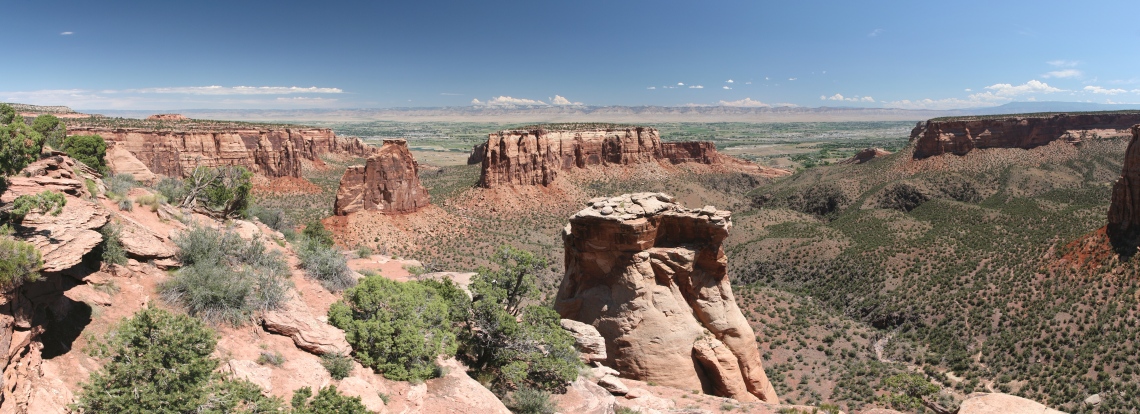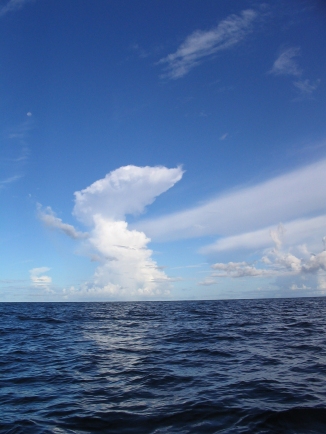President Trump issued two executive orders last week opening up the possibility that the President will reverse a national monument established by one of his three most recent predecessors. This has launched a debate on whether the President has authority to reverse a monument designation. I have an article at Reason contributing to that debate.

The Antiquities Act, under which these monuments were created, doesn’t provide an obvious answer. It doesn’t expressly say he can, but statutes rarely say that a President has discretion to undo a discretionary action. Yet it is always assumed and Presidents regularly exercise such authority.
For instance, Congress routinely delegates discretionary authority to issue regulations without explicitly saying that the regulations can be amended or repealed later. But, unless Congress indicates that it intentionally withheld that power, courts infer it all the time. So that weighs somewhat in favor of the President’s authority.
Professor John Yoo and my colleague Todd Gaziano recently published a paper with the American Enterprise Institute making the case that the President has this authority, based on the statute, history, and legal tradition. Several critics have argued that this must be wrong because the power to revoke a monument would be inconsistent with the Antiquities Act’s purpose.
In the American Thinker, I also have an article agreeing with the Yoo/Gaziano argument. There, I explain:
On one level, the argument that the president has this authority is obvious. Suppose, for instance, that a monument was created to protect an artifact that has since been excavated and taken to a museum, removing the monument’s justification. Or imagine a president designates a monument to protect what he later learns was a hoax. What sense would it make to forever forbid the use of federal lands in such circumstances? And what if a president declares a monument that violates the Antiquities Act? Are subsequent Presidents forever bound by that illegal action?

One type of monument ripe for reconsideration are the ocean monuments designated over the last ten years. These monuments are huge and highly disruptive to sustainable fishing. The largest monument is in the Pacific Ocean and is more than twice as large as Texas. Another monument in the Atlantic Ocean is the size of Connecticut. [Disclaimer: I’m representing commercial fishermen in a challenge to that monument.]
These monuments can’t be reconciled with the Antiquities Act, which expressly limits monuments to “lands owned or controlled by the Federal government.” Their large size can also be disruptive of existing sustainable fishing efforts.
To address overfishing, the United States has embraced the use of catch shares—a form of property right for fishermen that give them some incentive to responsibly manage the fishery and avoid overexploitation. The evidence indicates that this approach has been wildly successful and may even help reduce bycatch.
I’ve previously written about how the process for designating monuments stinks from a libertarian point of view. The Antiquities Act permits monuments to be designated by the President unilaterally, without any public input or requirement to support the determination with evidence. The result is that some monuments are extremely controversial with the communities in which they’re located and remain so for years.
Somewhat sensitive to this concern, Presidents have begun using a nonbinding public comment process for monuments. But this hasn’t mollified those affected because (1) the boundaries and size of the monument may be withheld from them during the comment period; and (2) the President has no obligation to listen to what they say or respond to it.
What do monument reversals mean for the environment? It’s not clear. The Antiquities Act was not intended to be a broad environmental conservation statute. But many environmentalists like it because it gives the President carte blanche to prohibit industry and productive use of these lands (although they don’t like this carte blanche now that President Trump may use it to reduce monuments).
Areas removed from monument status will remain federal owned lands and subject to the full fleet of environmental laws. So, in the short term, the environmental impacts are small. But if the President undoes a monument and successfully defends that action, it could lead to broader reform of the Antiquities Act that allows monuments and many other federal lands to be managed more effectively for both people and the environment.


Please do not destroy our federally protected monuments and lands. If you DONT care about the clean air and water they contain think of tourist dollars now and in the future.
LikeLike